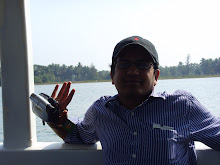IT and DNS attacks....
Saturday, July 21, 2007
Few things can strike fear into the heart of the IT department like an attack on a company's Domain Name System servers. That may explain why companies are spending so much time to deploy myriad, complex security measures to keep their DNS protected from attackers.
A study released Wednesday of 465 IT and business professionals says despite the Sisyphean efforts, many companies remain vulnerable. More than half the respondents reported having fallen victim to some form of malware attack. More than one-third had been hit by a denial-of-service (DoS) attack, and more than 44% had experienced a pharming or cache-poisoning attack. External and internal DNS servers were equally vulnerable: Both types succumbed to attacks with roughly the same frequency, according to the study by Mazerov Research and Consulting.
A DNS server compromised by a hacker could be used to funnel Web surfers to all sorts of phishing attacks and malicious Web sites, and in some cases even could cause havoc with directory services and e-mail, said Paul Mockapetris, the father of the DNS technology, in a Network World story earlier this year. "Once you control the DNS server, you have license to do phishing and pharming attacks and mislead all the users of that DNS server," said Mockapetris, who in 1983 proposed the DNS architecture and is acknowledged, along with the late Jon Postel, as the technology's inventor.
According to the Mazerov study, DoS attacks are prevalent among the respondents, with only 16% never having experienced one, although more than 10% said they often or frequently receive DoS attacks to their network. What also is interesting is that, while a total of 59% of respondents rarely or never experience DoS attacks, a surprisingly high 41% experience them. The study found that the top forms of DNS attack are malware (worms, viruses, Trojans and so forth), 68%; denial of service, 48%; cache poisoning, 36%; and pharming, 23%.
The patching game seems to be the method of choice for protecting DNS. Three-quarters of all respondents devote valuable resources to patching their operating systems continuously. Others reported having to harden operating systems; invest in dedicated firewalls; and add DNS appliances, DoS mitigation services and other network security devices. On average, respondents typically used at least 3.5 overlapping methods simultaneously to shore up their DNS security.
The study also looked at how long respondents' companies could weather DNS being taken offline before significant problems occurred, IT personnel were more sensitive to the issue than those occupying C-suites. According to the study, C-level executives estimated they could withstand losing Internet connectivity for slightly more than two hours (126 minutes), whereas IT managers estimated significant problems would arise after 105 minutes. Other IT personnel -- who may be most directly responsible for maintaining Internet uptime -- estimated an even shorter time frame -- an average of 72 minutes.
Respondents also were asked to assess what the probable impact would be on the health of their company if they were to experience a loss of Internet connectivity for a significant period of time. Maybe most alarming was that 12% of participants claimed they would be extremely or somewhat likely to go out of business completely, the study said.
Read more...